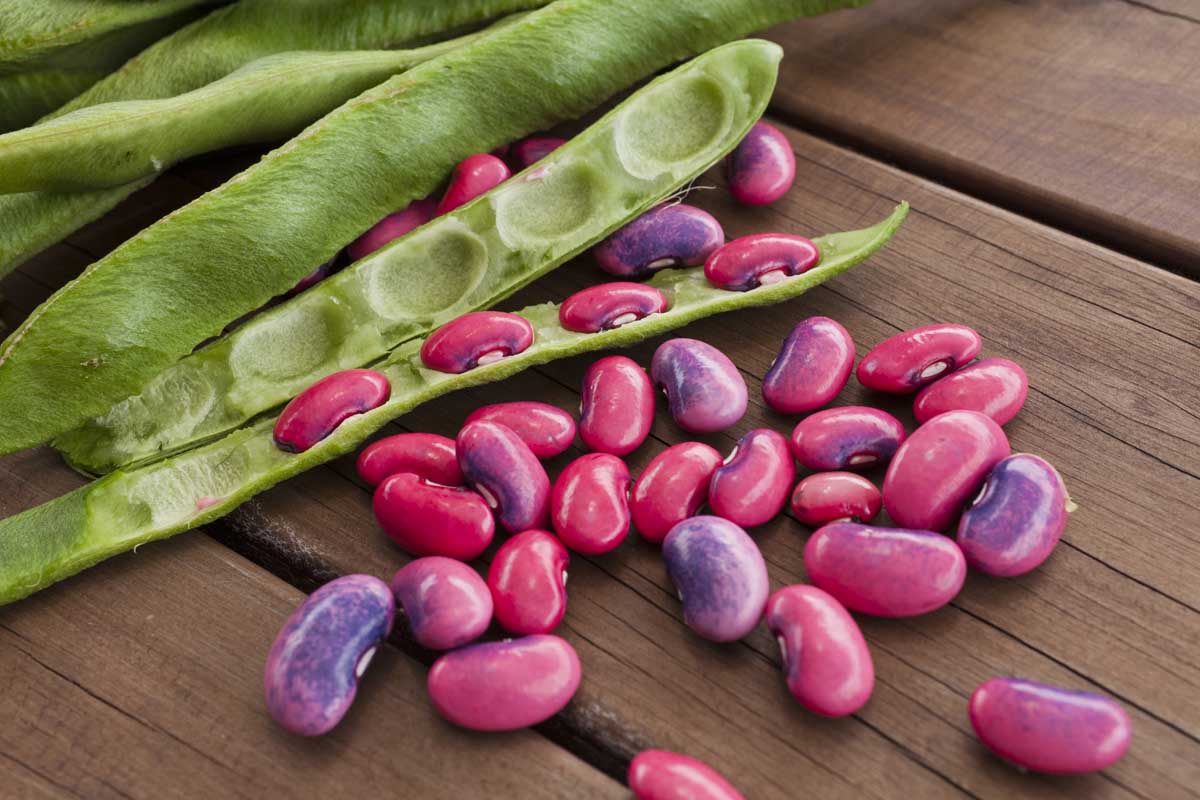Table of Contents
Are you searching for an exciting addition to your veggie recipes? Look no further than the illustrious runner bean!
These dynamic plants offer a robust yield with minimal maintenance, providing an ideal choice for gardeners of all levels. And with an impressive array of cultivars available, including the revered White Lady and Firestorm, the possibilities are endless.
This article will delve into the intricacies of cultivating runner beans and discuss when to harvest runner beans, including optimal feeding strategies, nutrient enrichment, and expert advice on harvesting methods.
With this comprehensive guide at your disposal, you can unlock the full potential of these versatile legumes and enjoy a plentiful harvest for seasons to come.
Understanding Runner Beans
Before we dive into this guide on growing runner beans, let us first take the time to understand what these wonderful greens are and how to grow them. First and foremost, runner beans are a type of legume native to Central America and Mexico, but with globalization, they are now grown all over the globe because of their high yield. Rich in Vitamin C, people on diet love runner beans for their low-calorie count, how it fills you up and serves as the perfect addition to soups, stews, and casseroles. They are also popular due to their ability to grow in tight or small areas and ease, making them the perfect crop for home gardeners.
Like most legume crops, runner beans can’t support themself and usually need something to help, such as a cane or a pole to support their weight. The most popular method of growing them is putting up sticks to keep their vines. Thus their alternate name is “pole beans”, and the other is to let them grow into a bush with a trellis to support them.
Importance of Harvesting at The Right Time
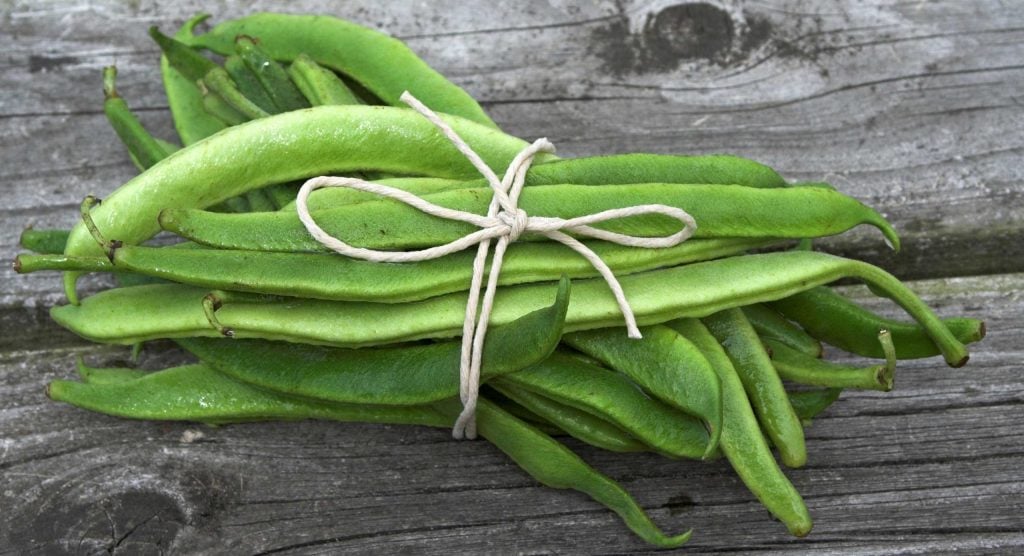
Harvesting your beans at the time decides the kind and quality of the product you get, and even the amount of have you get. Everything depends on when you prune your runner beans off the vines, from flavour and nutrition to texture. If you pluck them late, they’ll develop a tough, fibrous, and inedible texture, but if you pick them too early, your beans will be underdeveloped with a bland flavour.
Apart from the taste and the texture, not harvesting at the right time can also affect the overall health of you and your plant. For example, runner beans are at their best just before the stage at which they develop mature beans because they start producing Lectin Phytohaemagglutinin(PHA). This toxin causes nausea, vomiting, and diarrhoea.
Harvesting beans late can also reduce production in more ways than you think. Firstly, letting your beans harvest late means your vines must focus on sustaining the beans instead of producing more flowering, which means less produce. Plus, it also means you get less time for new beans before the season ends. So, to sum up, nipping off your beans right before complete maturity is essential for crop production, quality, and health.
Signs that Runner Beans Are Ready to Harvest
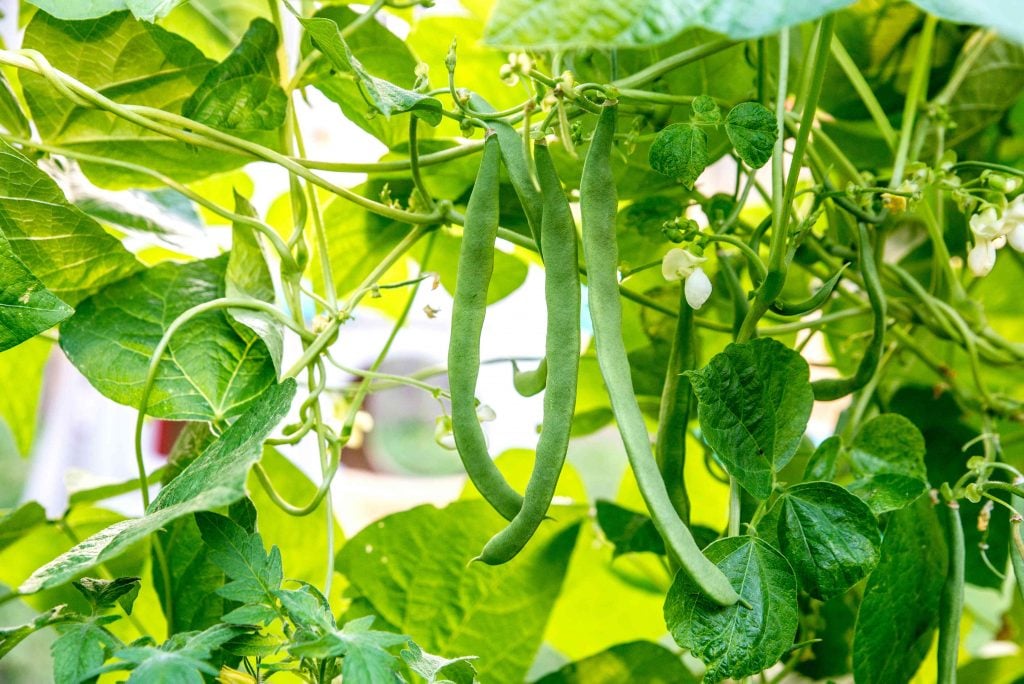
So, how do you know when your runner beans are ready to be picked? There are a few points to look out for:
1. Size
Typically, healthy runner beans grow up to 7-9 inches in length and 1cm in width. If smaller than this, have more patience and wait a few more days until they’re ready for harvest. However, you don’t want to pick them too late to avoid fibrous and inedible beans.
2. Texture
A good way to assess your beans’ texture is to squeeze a pod and feel for the bens inside gently. If the beans feel too squishy and soft, they may be overripe. On the contrary, they might be ready for harvesting if they feel firm.
3. Time
Runner beans are generally mature within 12 weeks. They are most likely ready to be picked if it has been around that time. Try to keep a regular watch on the growth of your beans to ensure that you don’t let them overgrow.
4. Color
Like all other crops, runny beans change their colour as they ripen/mature, thus indicating when your beans are ready to be pruned. When your runner beans develop a yellow or brown hue, remove them from the vine.
How to Harvest Runner Beans?
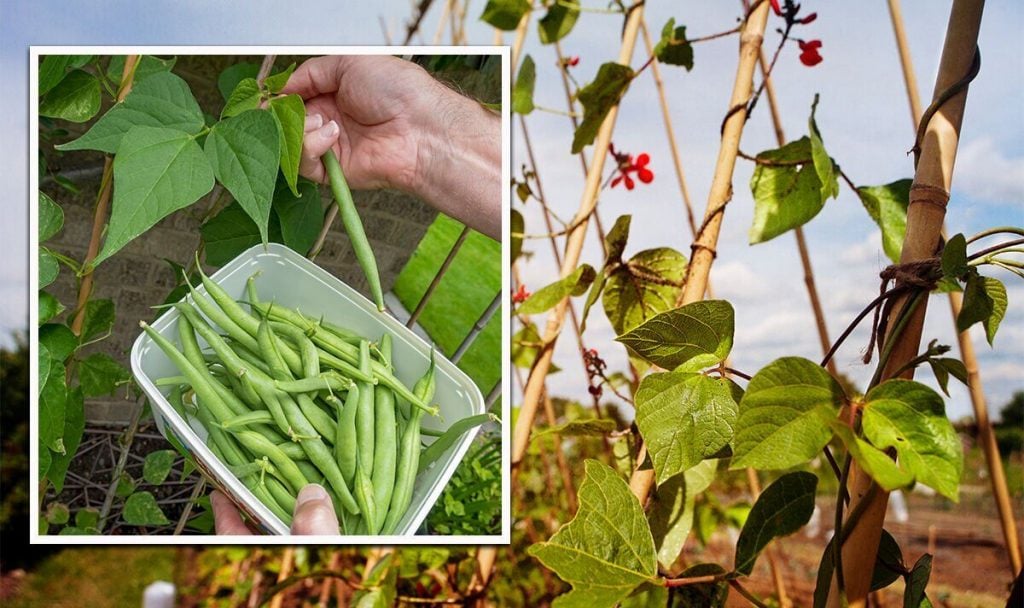
Once you have ensured that your runner beans are grown to perfection, how and how often you harvest them is another important factor. Let’s take a look at some of the key elements:
1. Use Clean Tools
This has to be the best thing you can do while harvesting your runner beans. Using clean utensils ensures you don’t infect your vines with anything detrimental to their health.
2. Sharp Tools
Make sure your knife or scissor is adequately sharp. This ensures that you don’t damage the plant while shearing off the beans, and you cut only where you need to, something you may face difficulty with using a blunt knife.
3. Don’t Prune Too Much
Don’t cut off stems completely from the vine; instead, leave a little bit attached to the stem, which ensures further development, more area for flowers to grow, and better future yield.
4. Harvest in The Morning
Harvesting your beans in the morning when the beans are crisp, and the plants are well-hydrated is the best practice. Avoid harvesting in the heat of the day when direct sunlight stresses the plant.
5. Harvest Regularly
As discussed earlier, harvesting regularly for continued growth and maximum production is essential. Pick your runner beans when they are about the size of 5-7 inches; this allows the vine to produce more flowers and, in turn, more beans.
6. Store Properly
It is essential to store your beans in a cold and dry place until you want to use them. Freshly harvested beans can be stored in your fridge for up to a week.
Different Types of Harvest Runner Beans
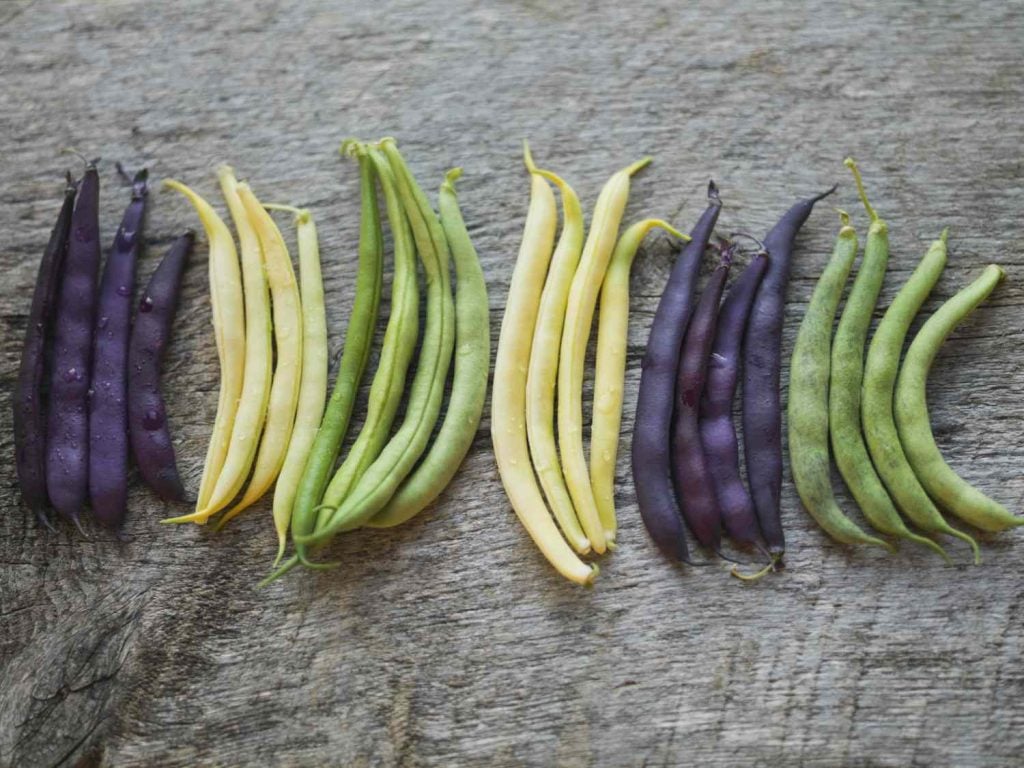
Like apples, runner beans come in various colours, shapes, and sizes; each type has its unique flavour and texture.
1. The Scarlet Emperor
One popular type is the Scarlet Emperor, a widely recognized runner bean type loved for its long, straight pods stretching up to 12 inches. It attracts pollinators to the garden with its vibrant red flowers. In addition, Scarlet Emperor beans are heavenly for stews and soups thanks to their rich, meaty flavour and firm texture.
2. The Painted Lady
The Painted Lady variety of runner beans is popular because of its stunningly beautiful flowers, which show off a lovely mix of pink and white. Unlike Scarlet Emperors, these beans are smaller and more delicate, with a nutty flavour and tender, soft texture. Their quick cooking time and vibrant colour make them perfect for salads and stir-fries.
3. The Luminescent Moonlight
The Luminescent Moonlight variety of runner beans produces subtle pale-yellow pods illuminating your garden while offering a slightly sweeter taste and similar texture and flavour to Scarlet Emperor beans. These beans are ideal for soups, stews, and casseroles, perfect for showcasing their colour and flavour.
4. The Desiree
The Desiree variety is a dwarf runner bean with compact plants that are excellent for container gardening. With their plump pods and sweet, nutty flavour, these beans are great alongside other veggies like tomatoes and peppers. Perfect for small gardens or balconies, these beans pack a punch.
5. The Streamline variety
The Streamline variety is a modern runner bean developed for its high yield and disease resistance. These beans have slender, straight pods and a mild but sweet flavour profile that is perfect for salads and stir-fries. Streamline beans are also great for canning and freezing, making them a popular choice for gardeners who want to preserve their harvest for longer.
6. The White Lady
The White Lady is a less common variety of runner beans with creamy-white pods and delicate white flowers. These beans have a subtle flavour and tender texture and are best enjoyed when young and tender. They are a great complement to vegetable dishes or as a side dish.
Benefits of Eating Freshly Harvested Runner Beans
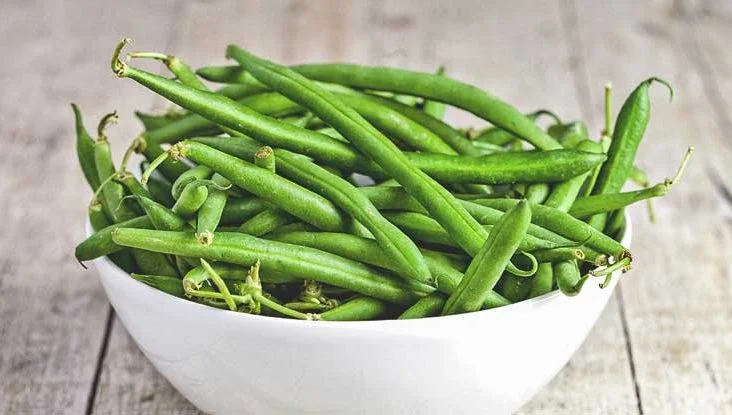
Runner beans are packed with nutrients and must be added to your diet. One cup of cooked beans contains:
- Less than 200 calories
- 13 grams of protein
- 16 grams of fibre
- Only 4 grams of fat
- It also carries 26% of your daily recommended intake of Iron
- 18% of the recommended daily intake of magnesium
- 22% of the recommended daily intake of vitamin B1 and 12% of the daily recommended vitamin B6
Recipes to Try with Fresh Runner Beans
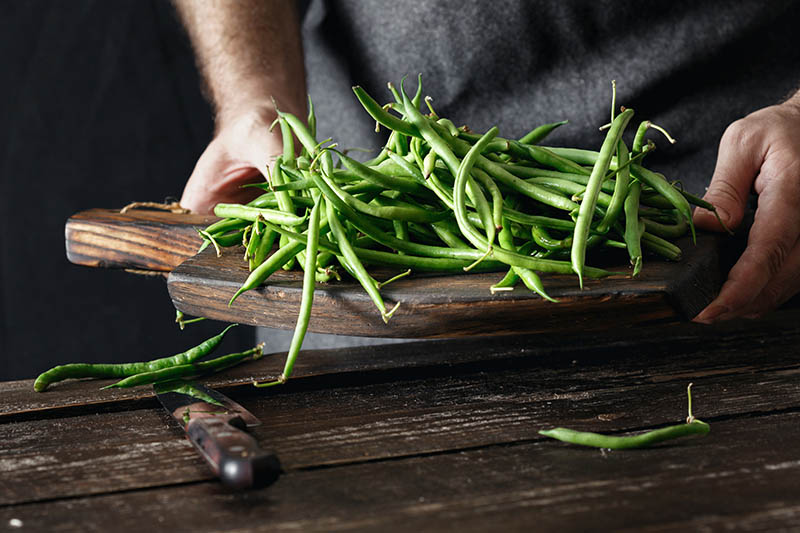
1. Runner Bean and Feta Salad
Toss some diced tomatoes and crumbled feta cheese in a pan with your cooked beans. Simply blanch the beans until tender-crisp, then toss them with a vinaigrette made with olive oil, lemon juice, Dijon mustard, and chopped herbs like parsley and thyme. Add some sliced cherry tomatoes and crumbled feta cheese for added flavour.
2. Runner Bean Soup
This hearty soup is perfect for the winter weather. Add sliced onions with garlic into a pan and stir them on low heat until they turn golden and transparent. Add some smashed tomatoes to the mix and then simmer with vegetable or chicken stock. Take your soup off the heat when it comes to a boil or has reduced significantly. Season your soup with salt and pepper for flavour.
3. Runner Bean and Potato Gratin
This cheesy gratin is the perfect dish to showcase the flavour of runner beans. Slice boiled potatoes and blanched runner beans into rounds, then layer them in a baking dish with grated cheese, cream, and a sprinkle of nutmeg. Bake it in the oven until it turns golden and bubbling. Serve as a side dish or a vegetarian main course.
A Beginner’s Guide to Runner Beans
To sum it all up, growing runner beans is an easy task that even a beginner gardener can undertake, but there are important factors to ensure healthy and bountiful produce. Runner bean harvesting must be done properly to provide the highest production, the plant’s health, and the quality crop. Size, texture, timing, and colour indicate that the beans are ready to be harvested.
The best future output is guaranteed by employing appropriate harvesting methods, which include using clean and sharp instruments, leaving some of the stems still attached to the bean, and harvesting in the morning. With the help of the information in this article, you should be able to grow and harvest your runner beans with ease and enjoy a tasty and healthy crop.
So, are you prepared to try growing and harvesting runner beans?
Frequently Asked Questions
When Is the Best Time to Harvest Runner Beans?
Runner beans are best harvested when the pods are still young and tender, usually 7-10 days after flowering. At this stage, the pods will be about 7-9 inches long and have a crisp texture. Over-ripe pods can be tough and stringy, so checking on your plants regularly and harvesting them at the right time is important.
Do I Need Any Special Tools to Harvest Runner Beans?
Harvesting runner beans is a breeze! No need for fancy equipment – use your hands to snap off the pods, or if you’d rather, grab a pair of scissors or garden shears. Be gentle while handling your vines and avoid causing any harm to the leaves or stems.
Can I Save Seeds from My Runner Bean Plants for Next Year?
Saving seeds from your healthy produce is essential for any farmer or gardener, but you need to keep it in mind to do so at the end of the season, ensuring you get a high yield throughout the season and great seeds at the end of it. This also provides optimal growth of your beans this season, and you’re ready for the next season.

